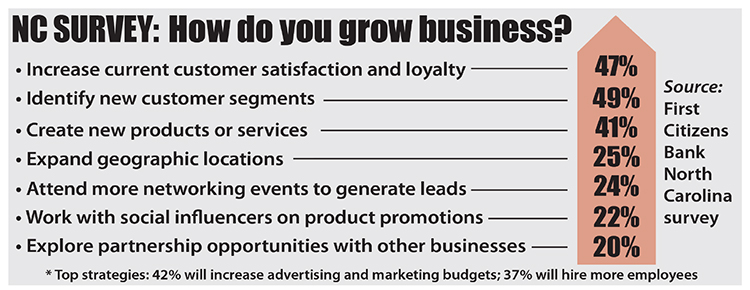
By Dave Yochum. The statewide unemployment rate fell a tenth of a percentage point to 4.1 percent in September, ahead of the national rate of 3.5 percent, but metro areas like Charlotte and Raleigh are booming.
Since December of 2007, Charlotte and Raleigh have both seen their job number leap 30 percent.
Meanwhile, Charlotte added nearly 100 people per day in 2018. More than 25 firms announced major expansions or relocations.

VITNER
Indeed, North Carolina has one of the nation’s strongest job markets, with employers adding 8,000 net new jobs in September and 99,000 jobs during the past year. North Carolina took longer to recover from the Great Recession and generally lagged behind the nation through the first four years of the recovery.
Metro areas like Asheville, Winston-Salem, Charlotte, and Raleigh are leading the state with strong job growth, while rural areas and some inland areas along the coast are far behind in the recovery from the Great Recession.
Winston-Salem, Charlotte and Raleigh have experienced year-over-year job growth rates of 4, 3.9 and 3 percent respectively. Asheville’s 5.6 percent employment gain earns it the state’s strongest growth rate year-over-year. Since December of 2007, job growth has almost reached 20 percent.
Fayetteville reports job growth of 2.9 percent since last August, but it is largely flat since December of 2007. Laurinburg has lost 16.4 percent of its jobs over the past 12 years. Scotland County, home of Laurinburg, had the highest unemployment rate at 7.5 percent.
While hiring has picked up in recent months, the impact from the slowing global economy is more apparent. North Carolina manufacturers cut 4,200 jobs in September and employment in the manufacturing sector has fallen 1.8 percent over the past year.
In-migration, expansion
Charlotte, however, continues to be a magnet for in-migration and corporate expansion. Microsoft Corp. will add 430 new jobs in Mecklenburg County with a $23 million expansion. Honeywell is moving its corporate headquarters from New Jersey; Avid Exchange will double its workforce and build a 201,000 square-foot facility on the AvidXchange Music Factory campus just north of Uptown Charlotte.
“The Charlotte and Raleigh regions—home to a growing slate of financial and technology firms—are driving much of the state’s growth, which is increasingly concentrated in professional & business services, financial activities, healthcare and technology,” said Mark Vitner, senior economist at Wells Fargo in Charlotte.
Financial center
The Charlotte region is one of the nation’s largest financial centers.
Banking and finance directly employ 96,000 workers in the Charlotte area, which is home to the headquarters of Bank of America as well as the largest employment base for Wells Fargo. In Cornelius, Aquesta Financial continues to hire and expand, including in Charlotte.

ENGEL
“We celebrated the opening of our eighth branch located at Rea Farms south of Charlotte last week. This represents six more Aquesta employees. We continue to expand with IT and Operations teammates too,” said Aquesta CEO Jim Engel.
Weak spots, still
But some North Carolina counties are worse off now than they were at the beginning of the Great Recession, said William Munn, policy analyst with the Budget & Tax Center, part of the NC Justice Center. “It’s concerning that, as we prepare for more economic and natural shocks to our economy, too few of our communities are ready to weather new storms,” he said.
Rockingham and Lumberton have among the state’s worst job growth rates, losing 16.3 percent and 12.1 percent of their jobs. Lumberton, of course, suffered mightily from hurricanes Matthew and Florence.
Wells Fargo says consumer spending powered the economy in the second quarter, but it’s slowing down. Wells forecasts consumer spending growing at roughly a 2 percent pace throughout 2020 and 2021.
Lawrence Yun, chief economist for the National Association of Realtors, said mortgage rates will remain low next year, around 3.7 percent for 30-year fixed-rate home loans, which bodes well for the critical housing market.
According to the NAR, 63 percent of Americans believe now is a good time to buy a home. “Mortgage rates are at historically low levels, so I see no sign of the optimism about home buying fading,” Yun said.
Engel said Aquesta continues to see “outstanding” deposit and loan growth, driven by new residents and the expansion of existing businesses.
“We have yet to see any slowdown and remain optimistic about the coming year,” Engel said.

Discussion
No comments yet.